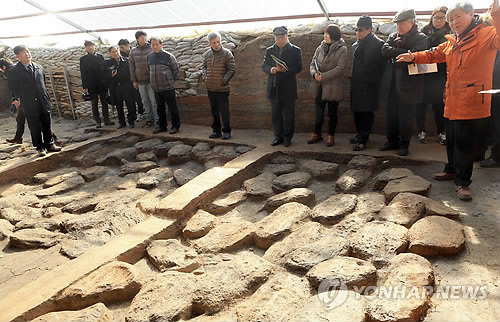- California Assembly OKs highest minimum wage in nation
- S. Korea unveils first graphic cigarette warnings
- US joins with South Korea, Japan in bid to deter North Korea
- LPGA golfer Chun In-gee finally back in action
- S. Korea won’t be top seed in final World Cup qualification round
- US men’s soccer misses 2nd straight Olympics
- US back on track in qualifying with 4-0 win over Guatemala
- High-intensity workout injuries spawn cottage industry
- CDC expands range of Zika mosquitoes into parts of Northeast
- Who knew? ‘The Walking Dead’ is helping families connect
Int’l NGO to recognize S. Korean reservoir as heritage irrigation structure
GIMJE, South Korea, Oct. 21 (Yonhap) — An international non-governmental organization on water management technology has decided to recognize the Byeokgol Reservoir, the oldest and largest reservoir on the Korean Peninsula located in the southwestern city of Gimje, as a heritage irrigation structure, the Gimje municipality said Friday.
According to Gimje officials, the New International Commission on Irrigation and Drainage (ICID) has informed the South Korean city government of the decision to enter the reservoir into the list of ICID heritage irrigation structures along with Seoho Lake, also known as the Chukman Reservoir, in the city of Suwon, just south of Seoul.
The New Delhi-based NGO plans to announce the new entries on Nov. 18 when it holds a plenary meeting of the ICID executive committee in Bangkok, Thailand. It will mark the first time for South Korean irrigation structures to be recognized as its heritage irrigation structures.
Established in 1950, the ICID is a leading scientific and technical NGO that has facilitated the sharing of experiences and transfer of water management technology through its network of professionals spread throughout more than a hundred countries.
South Korea acceded to the international body in 1969, with the Korea Irrigation and Drainage Society representing the country. The ICID made the scheme for the recognition of heritage irrigation in 2012 in a bid to trace the history of irrigation in civilizations around the world and collect information on historical irrigation structures worldwide.
A total of 26 irrigation facilities in five countries — China, Japan, Sri Lanka, Pakistan and Thailand — have made the list of heritage irrigation structures so far. No structures in South Korea have yet to be listed.
The Byeokgol Reservoir in Gimje, a city in South Korea’s southwest province of North Jeolla, was built in A.D. 330 under the rule of King Heulhae, the 16th monarch of the Silla Kingdom (57 B.C. to A.D. 935), according to historical records.

This undated photo shows people taking part in the excavation of the dike of the Byeokgol Reservoir, the oldest and largest reservoir on the Korean Peninsula, in the southwestern city of Gimje.
The reservoir, which has a dike 3,250 meters long and covers an area of 37 square kilometers, is estimated to be a cultural asset of mankind showing the history of water management facilities and their construction skills in old East Asia.
The Chukman Reservoir was constructed in 1799, when King Jeongjo, the 22nd monarch of the Joseon Dynasty (1392-1910), built the city’s Hwaseong Fortress, a UNESCO-designated cultural heritage site. It was used not only for agricultural water management but also for a place where Korean scholars enjoyed the arts.











